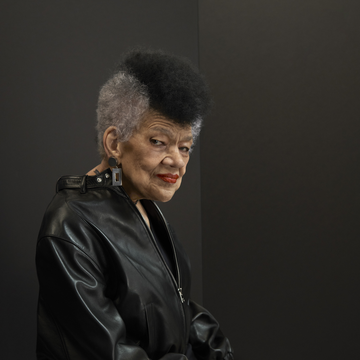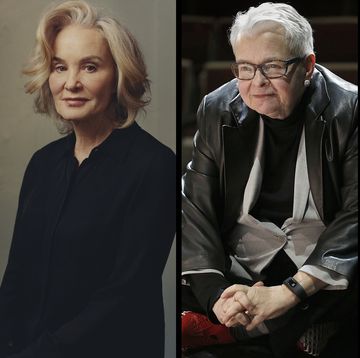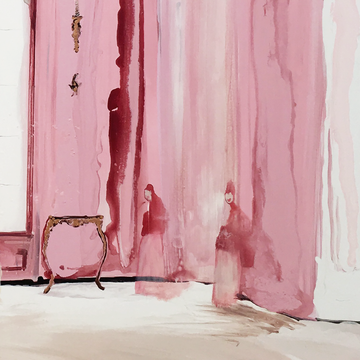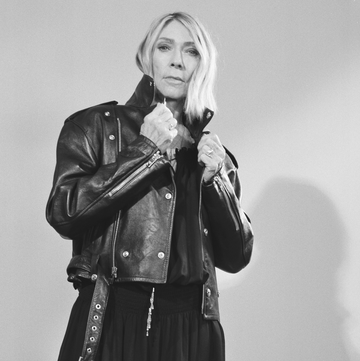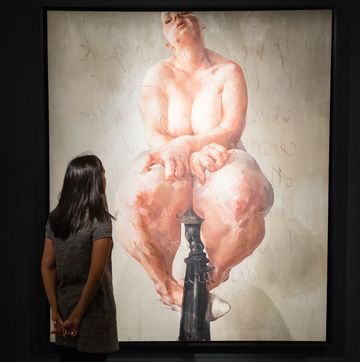The great 20th-century painter Paul Klee (1879—1940) had an intriguing theory about our lives. He thought they were characterized by what he called loose continuities—patterns, encounters, and connections that, of course, were revealed only in hindsight with the passage of time.
It's an interesting thought experiment to apply to your own life, and it's surprising what loose continuities you'll find there, lurking in the seemingly random journey we make from cradle to grave. To take the ones between my own life and David Bowie's, it begins in 1971 with the release of his fourth album, Hunky Dory. I can see myself in my student flat listening to it again and again and again. I was mesmerized.
And then, a few years later, I saw Bowie himself walking up Long Acre in Covent Garden, London. He was with a young woman and was wearing a vibrant red suit. Nobody bothered him, and he passed on by, chatting enthusiastically with his companion.
Cut to the mid-1990s. I joined the editorial board of the art magazine Modern Painters. At our first board meeting, I found, to my total astonishment, that I was sitting beside David Bowie, the other new recruit to the masthead. Because we were the new boys, we would sit next to each other at ed-board meetings, and over the next few years I saw quite a lot of him. In fact, David Bowie became my publisher—his publishing company, 21, published my fake biography, Nat Tate: An American Artist: 1928—1960.
Bowie's life as an editor, art critic, and publisher (and hoaxer) is not well-known. I doubt that the new exhibition, "David Bowie Is," at London's Victoria and Albert Museum, will feature much about the Modern Painters years—concentrating, as it properly should, on the multifarious talents on display of someone who has been described as the biggest cult figure ever in popular culture. When one looks back at the decades of Bowie's career, it is the variety and metamorphoses that so compel. From Ziggy Stardust to the Thin White Duke, from the changing musical styles through pop, glam rock, plastic soul, minimalism, and so forth, it's clear that Bowie is one of those artists--like Picasso, like David Hockney—for whom the idea of standing still is anathema.
Such restless, prodigious mutation is a particular cast of mind—some artists are happy to do the same thing again and again; others can't wait to move on. The old saying that "the fox knows many things but the hedgehog knows one big thing" was never more apt. David Bowie is a fox.
And his polymathic brilliance doesn't just encompass the world of music, as this exhibition will make clear. The more than 300 objects assembled include clothes, photographs, graphic design, videos, as well as some of Bowie's own sketches and writings. Think about that extraordinary generation of British musicians that emerged in the 1960s—add to Bowie's name those of John Lennon, Mick Jagger, Bryan Ferry, Pete Townshend, David Gilmour—and you realize that apart from being super-abundantly gifted as musicians, they were "intellectuals." They were and are avid readers and thinkers, and through their music—and the context they gave it—they participated in and shaped the cultural life with a seriousness of intent that perhaps hasn't fully been recognized.
But David Bowie is the doyen, the master. The last time I saw him was in New York some years ago (the continuities have loosened again) at a party hosted by his wife, Iman. As we greeted each other and chatted, I asked him if he ever had any trouble moving around the city. No, he said, he happily used cabs and subways when necessary. "I just carry a Greek newspaper," he added with a knowing grin. Brilliant. People think, That's David Bowie, then see the Greek newspaper. Nah. So we can add another category to the long list of achievements this man has carried off so memorably. He is not just an unforgettable songwriter, performer, and musician but an actor, artist, writer, publisher, and, it turns out—though we shouldn't be surprised—a master of disguise.
William Boyd is the author of the play Longing, opening this month in London, and the new James Bond novel out this fall. David Bowie's new album, The Next Day, is set to be released on March 12.
Pictured above: The Thin White Duke in 1976



